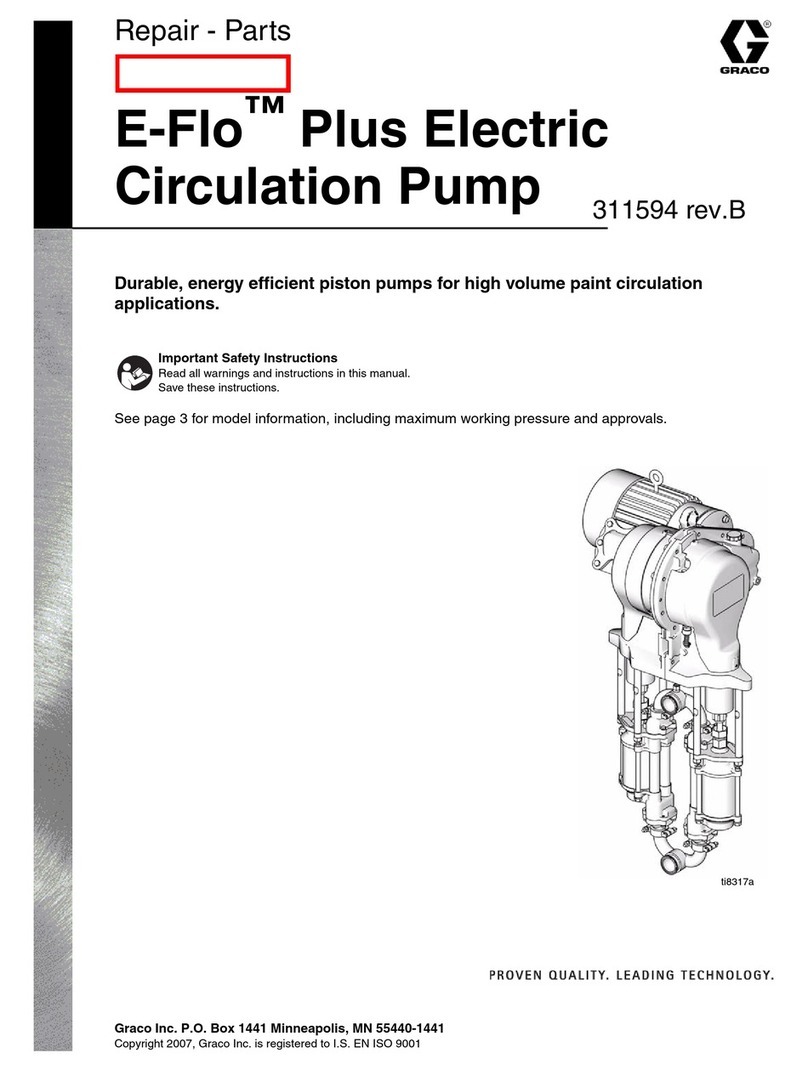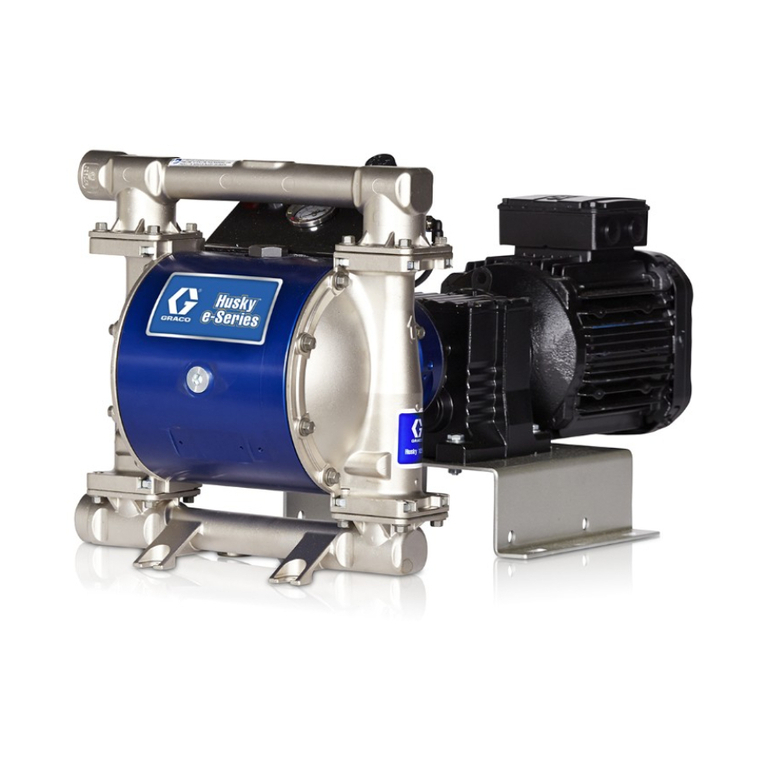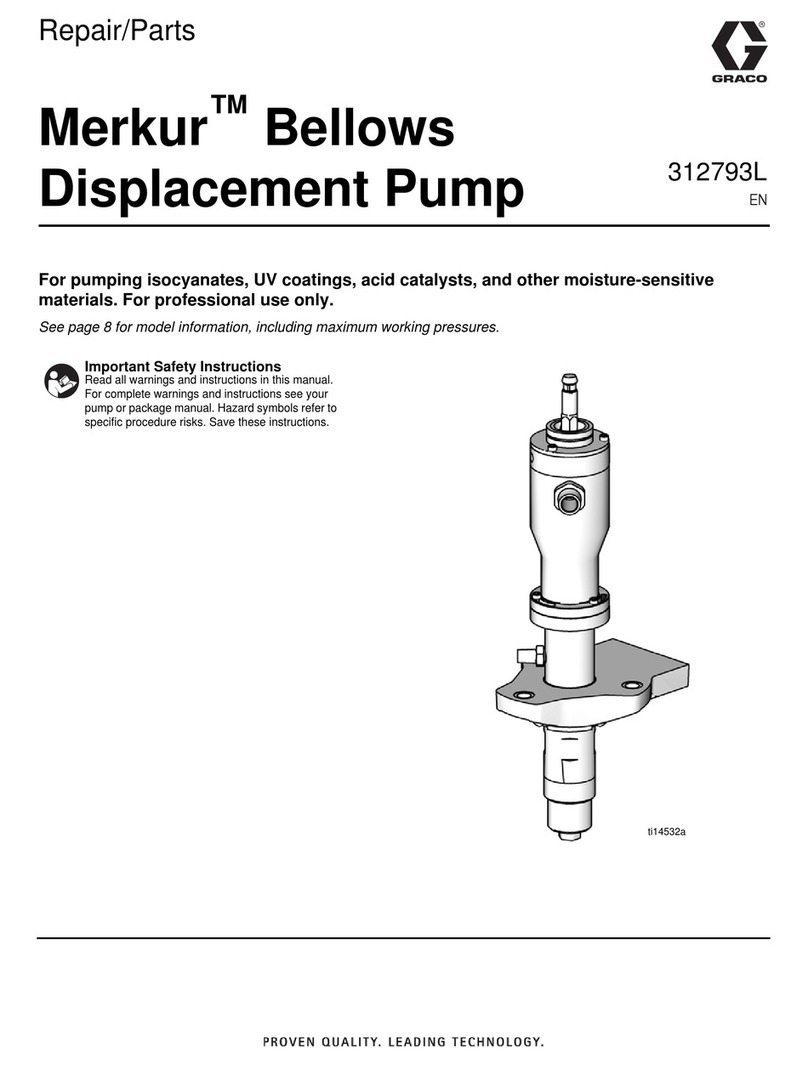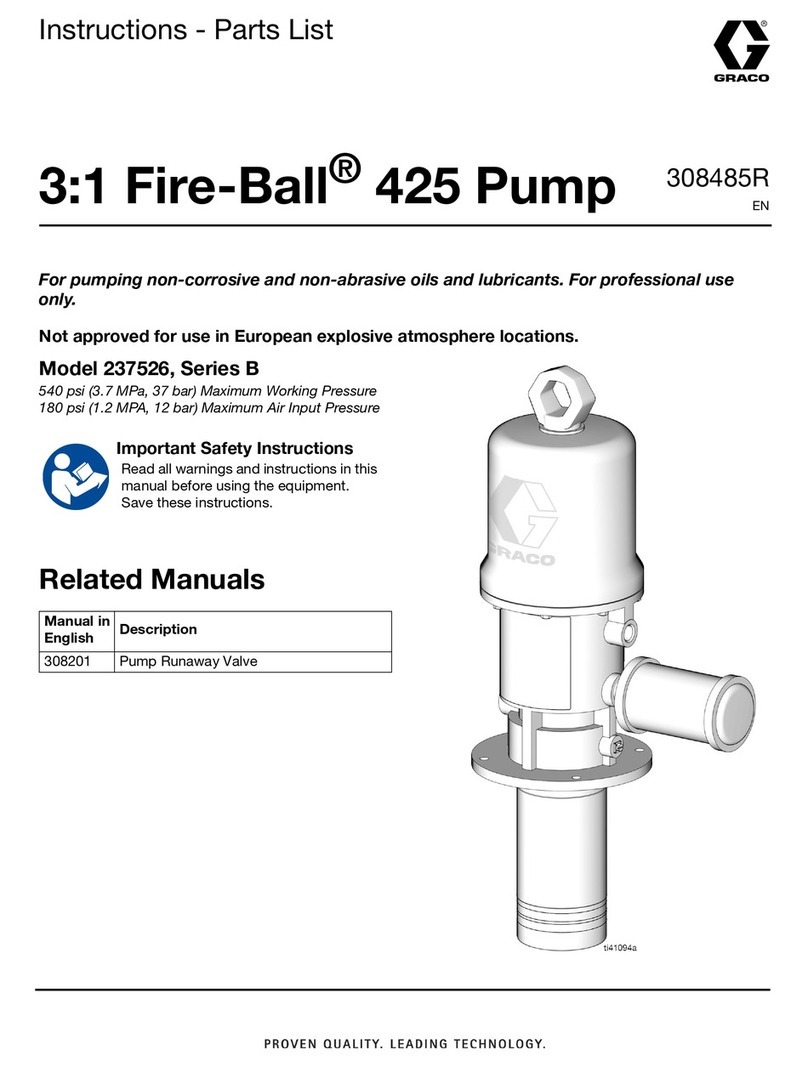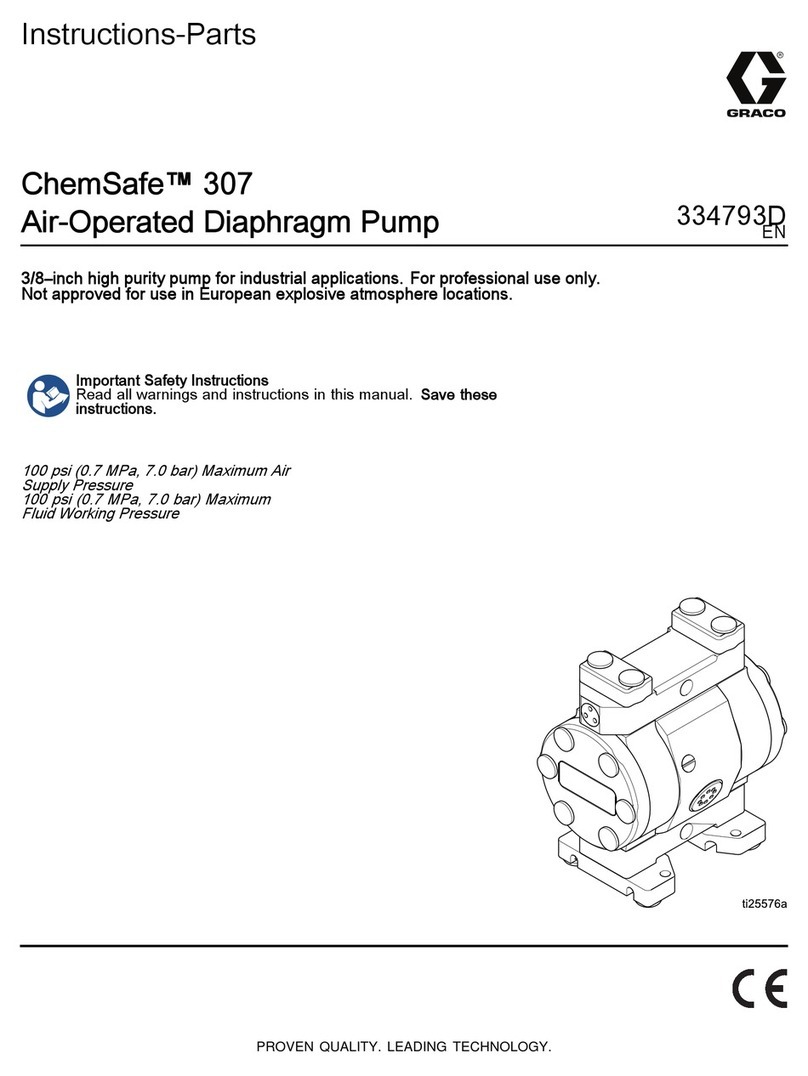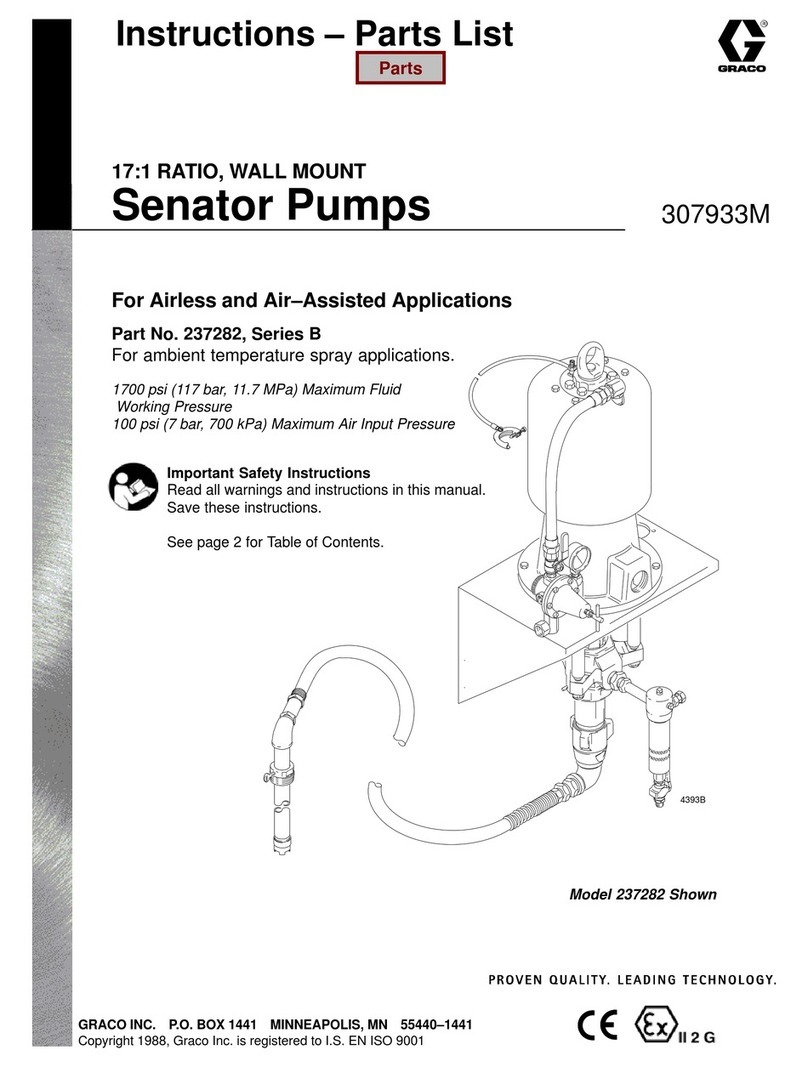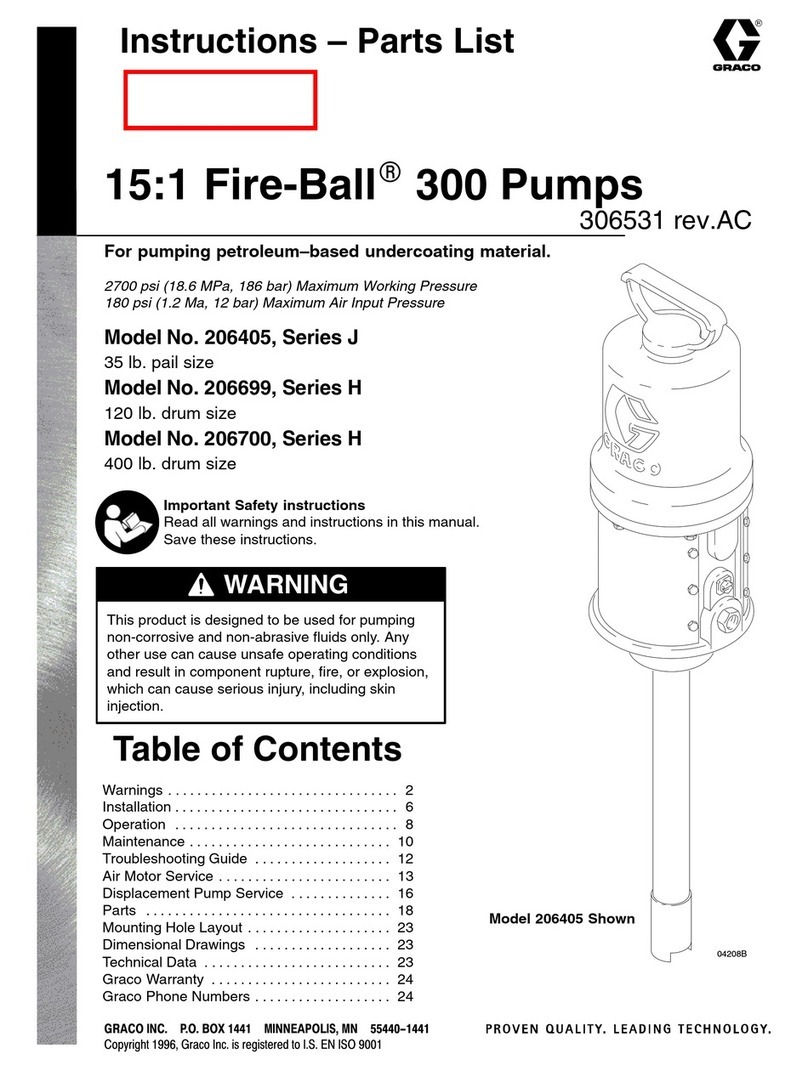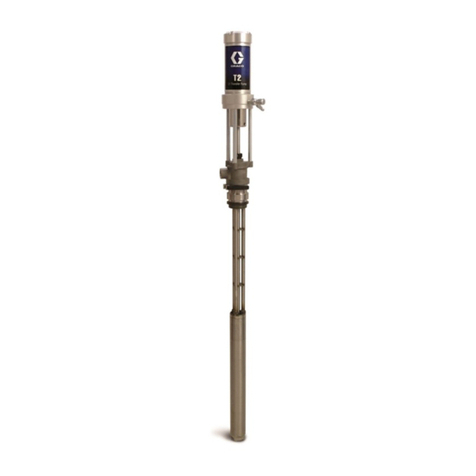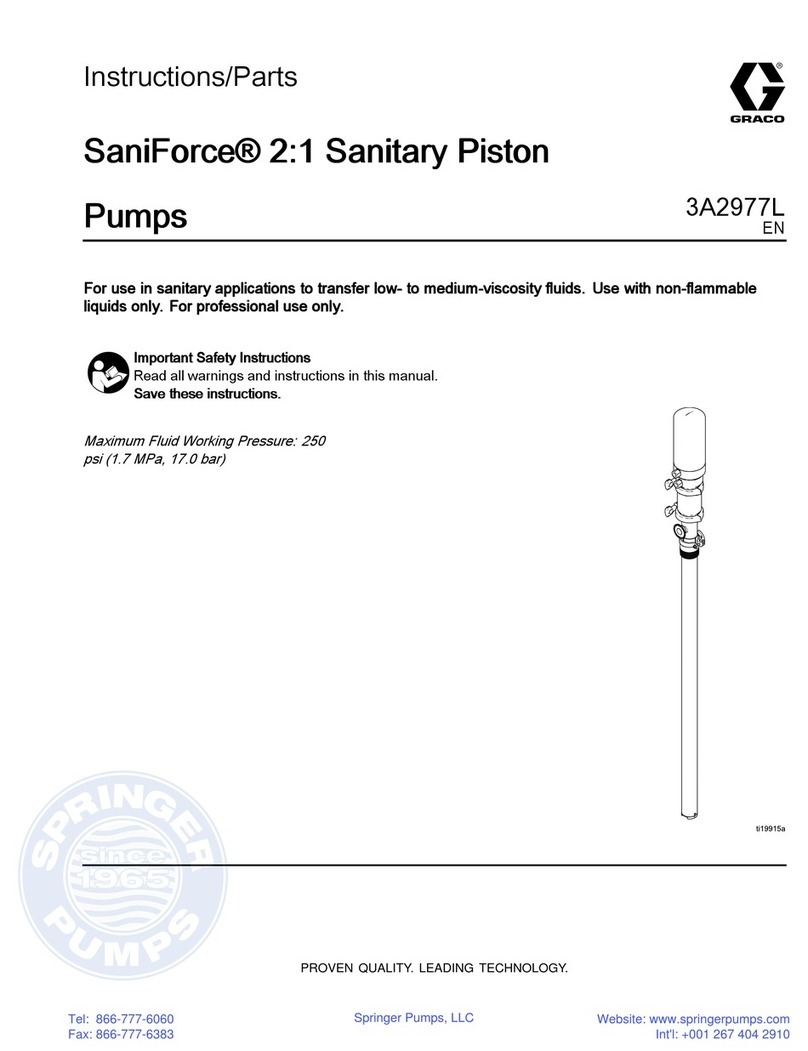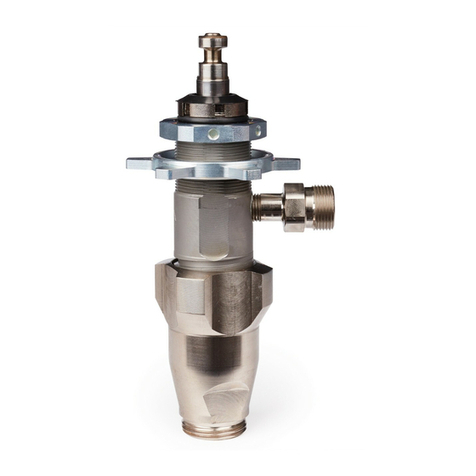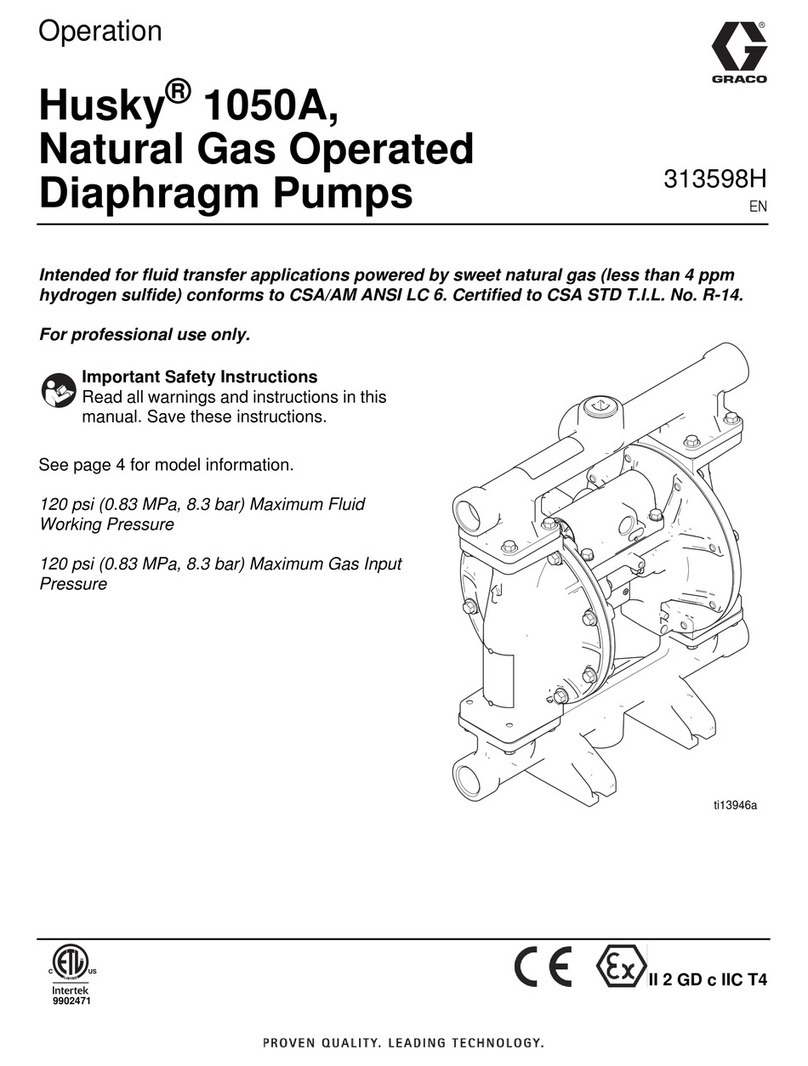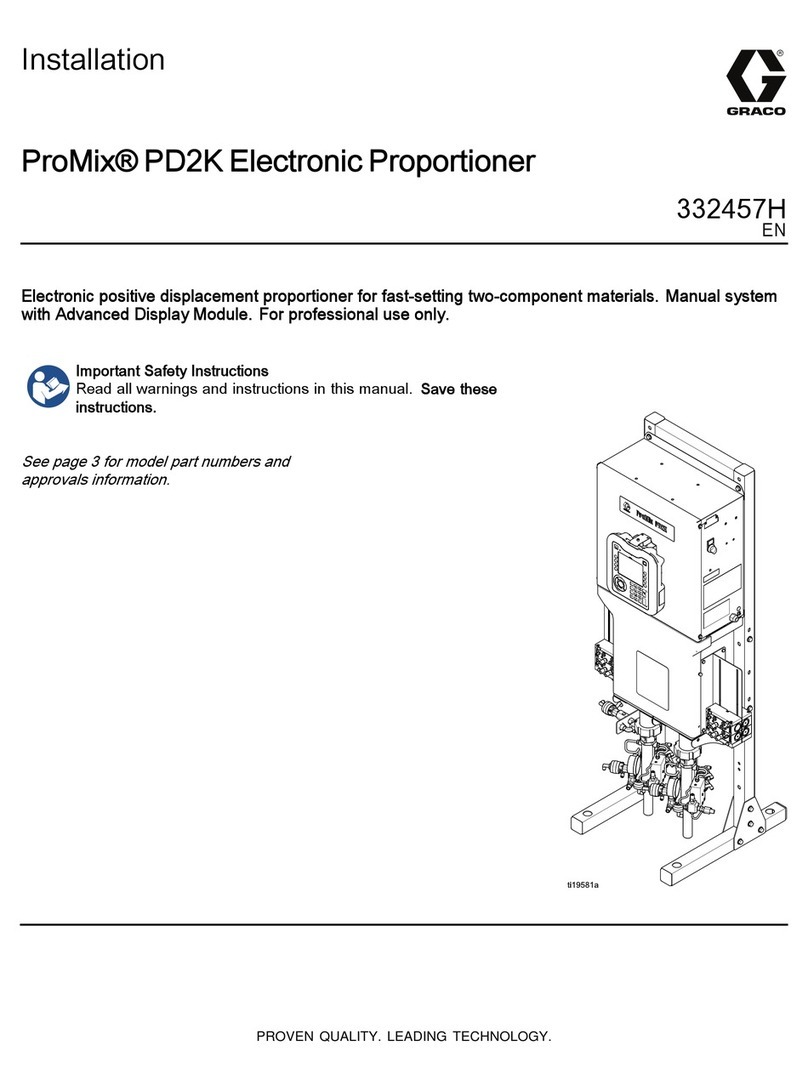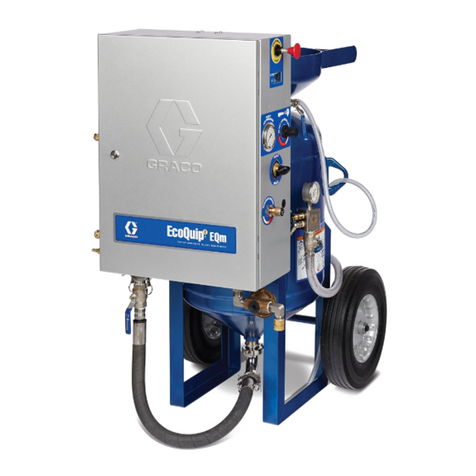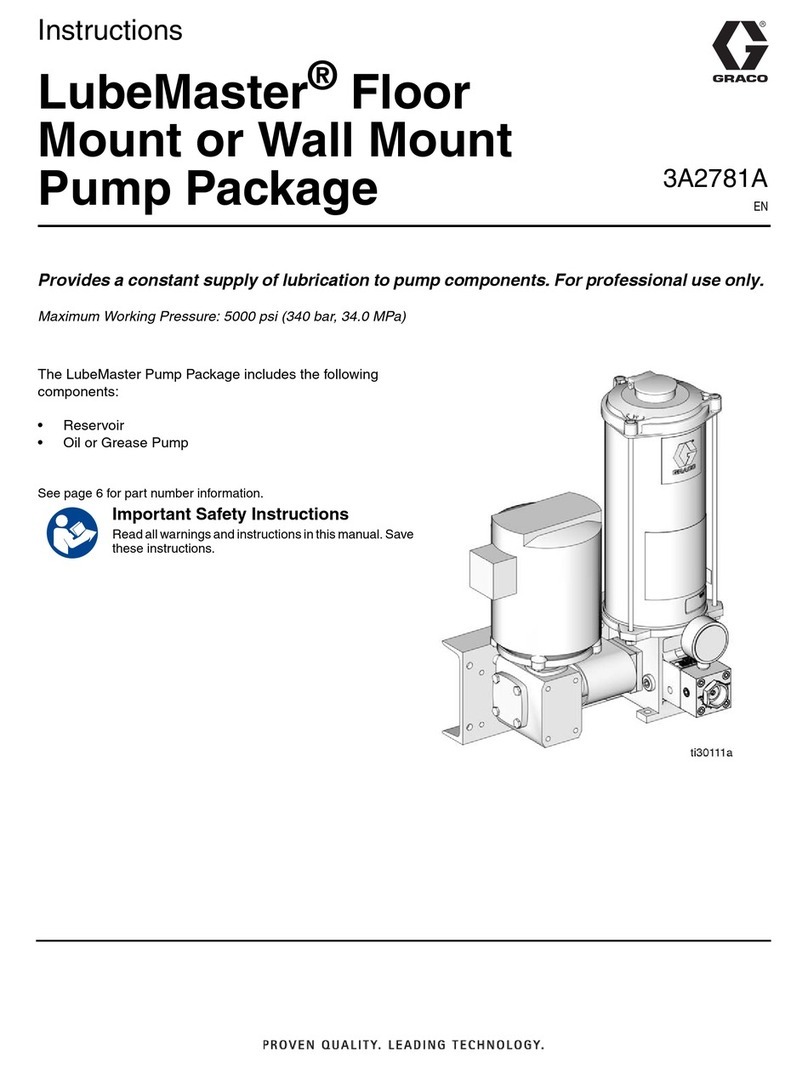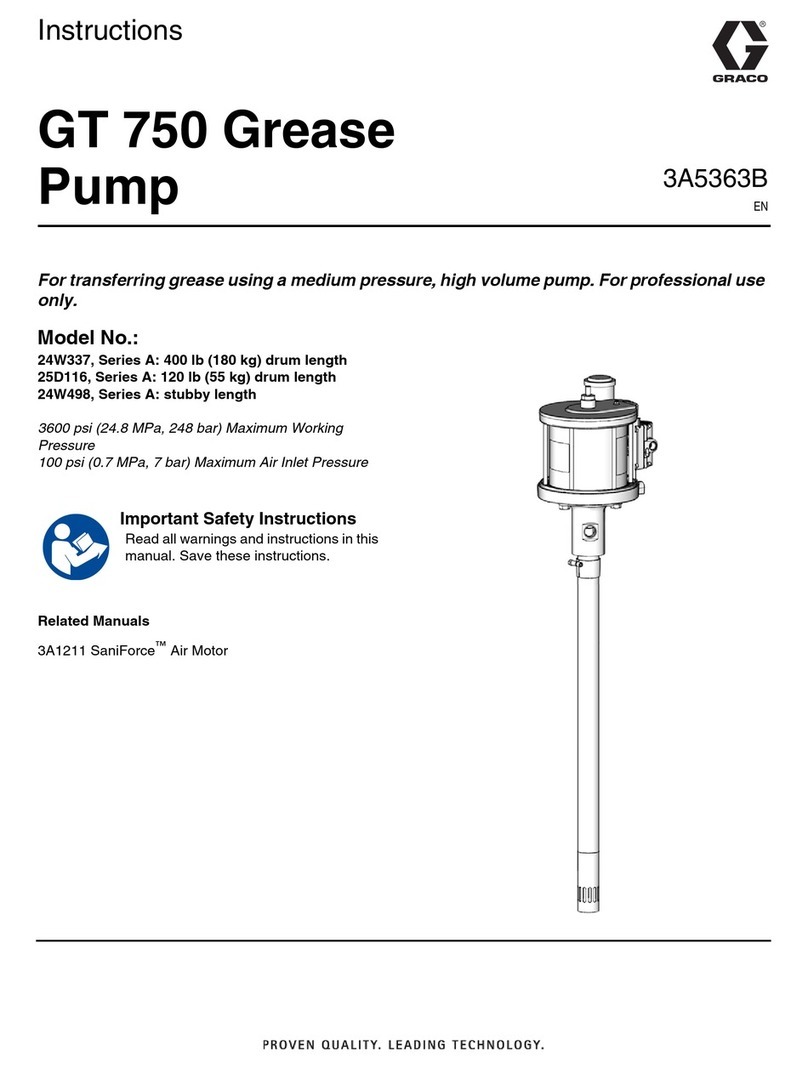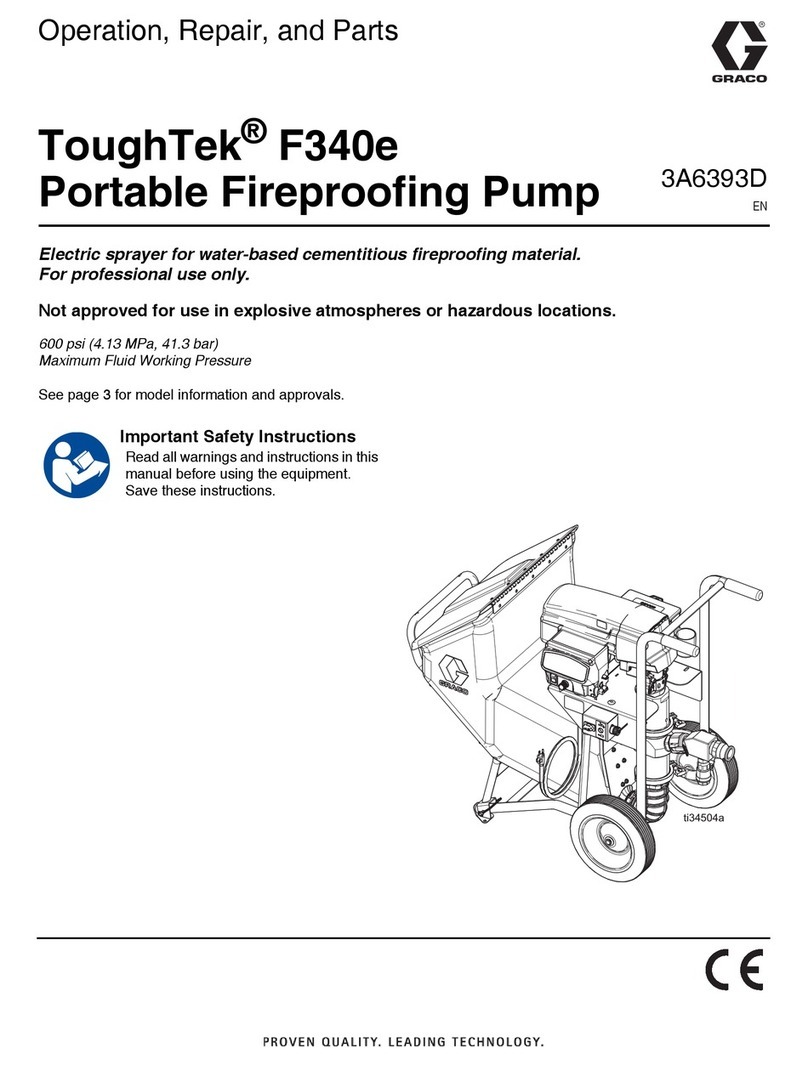
EQUlPMEMT MISUSE
HAZARD
Any misuseof thesprayequipmentor accessories,such
General Safety
as overpressurizing, modifying parts, usingincompati-
parts, cancausethem
to
rupture and result
in
fluidinjec-
ble chemicalsand fluids,orusing wornor damaged
tion or other seriousbodily injury,fire, explosion orpro-
perty damage.
NEVER alter ormodifyany part of this equipment; doing
so
could cause
it
to malfunction.
CHECK
all
spray equipmentregularlyand repairor
replace worn or damaged parts immediately.
Read and follow the fluid and solvent manufacturer’s
equipment.
literatureregardingthe
use
ofprotectiveclothingand
The maximum safe hydraulicinput pressure to this
System Pressure
which it is connected. With Graco Models 207.474.
motor is governed bythe lower displacementpump
to
207-655and210-208displacementpumpassemblieson-
ly, hydraulic inputpressureof up
to
a maximum of1500
bar1hydraulic inputpressurewith the motorconnected
psi
(103
bar) may be used. NEVER exceed
loo0
psi
I69
to
anydisplacement pumpother
than
thoselisted
above.
Be surethat all accessoriesyou add tothe spray system
and fluid workingpressures of this system.
are properly rated
to
withstand the maximum hydraulic
Fluid Compatibility
compatible
with
thewettedpartsshowninthe
BE SUREthat allfluidsand solventsused are chemically
Technical Data
in
the separate pump manual. Always
read thefluid and solventmanufacturer’sliterature
before using them in the pump.
HOSE SAFETY
High pressurefluid
in
the hosescan be very dangerous.
If
the HANDLE AND ROUTEHOSESCAREFULLY.
Do
notpull on
hose develops
a
leak, split or rupturedue to any kind of wear,
damageor misuse, the.highpressure sprayemittedfrom
it
can hosesto move equipment.
Do
not
use
fluids or solvents which
cause a fluid injection injury or other serious bodily injury or are not compatiblewith theinnertube and cover of thehose.
DO
NOT exposeGracohose to temperatures above 180°F
property damage. 182°C)or below
-40°F
(-40°C).
ALLFLUID SPRAYHOSES MUSTHAVE
SPRING
kinks or bends
at
or close to the coupling whichcan result in
GUARDS1 The spring guards helpprotectthe hose from
hose rupture.
TIGHTEN
all
fluid connectionssecurely beforeeach use. High
pressure sprayto be emitted from the coupling.
pressure fluid candislodge
a
loosecoupling or allowhigh
NEVER use a damaged hose.Beforeeach use, check the en-
tirehosefor cuts,leaks, abrasion, bulging cover, or damageor
exist, replace the hose immediately.
DO
NOT try to recouple
movement of the hose couplings.
If
any
of
these conditions
highpressurehose
of
mend
it
with
tape oranyother device. A
repaired hose cannot contain the high pressurefluid.
Hose
Groundin Continuity
Proper hosegrouniing continuityis essential
to
maintaininga
grounded spraysystem. Checktheelectrical resistanceof your
hydraulic and fluid hoses at least once a week.
If
your hose
does not have atag on
it
which specifies the maximumelec-
trical resistance, contact thehosesupplieror manufacturer for
the maximum resistance limits. Use a resistance meter in the
appropriaterange for yourhose to check the resistance. If the
resistanceexceeds therecommendedlimits, replace
it
im-
yoursystemhazardous. Also readFIRE
OR
EXPLOSION
mediately. An ungrounded or poorly groundedhose can make
HAZARD, below.
FIRE
OR
EXPLOSION
HAZARD
through the pumpand hose. If every part of thespray equip-
Static electricity is created by the high velocity flow
of
fluid
system rnaybecomehazardous. Sparking mayalso occur
ment is not properly grounded. sparking rnay occur, and the
when plugging
in
or unplugginga power supply cord.Sparks
dust particles and other flammable substances, whether you
can ignite fumes from solvents and the fluid being sprayed,
are spraying indoors or outdoors, and cancause a fire or ex-
plosionand seriousbodily injury and propertydamage.
Do
not
when there is any chance of ignitingfumes still
in
the air.
plug In or unplug any power supply cords
In
the spray area
while using this equipment, STOP SPRAYING IMMEDIATE-
If
you
experienceany static sparking oreven
a
slight shock
LY.
Check the entiresystemforpositivegrounding.
Do
not
corrected.
usethe system againuntil theproblemhas beenidentifiedand
Grounding
Toreduce therisk of staticsparking, ground the pump and
all
other spray equipment used orlocated in the spray area.
structions for your area and type of equipment. BE SURE to
CHECK your
local
electrical code for detailedgrounding in-
ground
all
of this spray equipment:
1.
Pump:
use aground wireand clampas instructedonpage4.
2.
Fluid
andhydraulichoses: use only groundedhoses. Refer
to
Hose
Grounding Continuity, above.
3.
Hydraulicpowersupply: follow manufacturer’s recommen-
dations.
4. Spray
gun
or dispensing valve: obtain grounding through
connection to a properly grounded fluid hose and pump.
5.
Object beingsprayed: according to your local code.
6.
Fluid
supply
container:
according
to
your
local
code.
7.
All
solvent
pails
used whenflushing,according
to
local
code. Use only metalpails, which are conductive.
Do
not
or cardboard,which interrupts the grounding continuity.
place the pail on a non-conductive surface, such as paper
8.
To
maintain grounding continuity when
flushing
or reliev-
ingpressure, always hold a metal part of the gun firmly
to
the side of
a
grounded metalpail, then trigger the gun.
flushing Safety
Reduce the risk offluid injectioninjury,static sparking,or
splashing byfollowing the specific flushing procedurb given
in
your separate pump instructionmanual. Follow thePressure
guns
only)
before
flushing.
Hold
a
metal partof the gun firmly
Relief
Procedure onpage 2, and remove the spray
tip
(spray
to the side of agrounded metalpail and use the lowest possi-
blefluid pressure during flushing.
307-158
3
